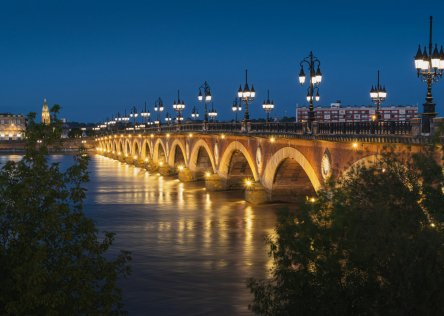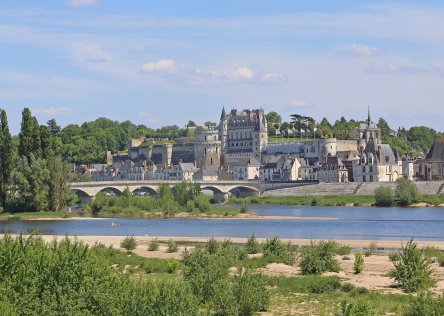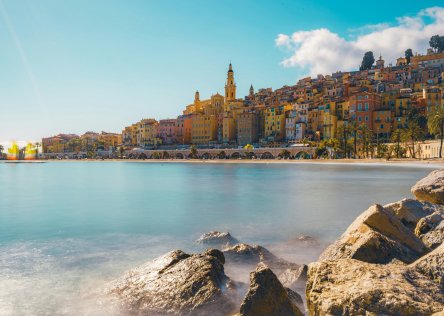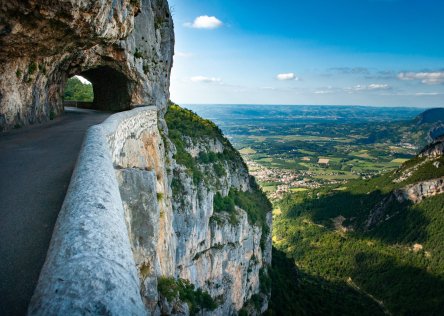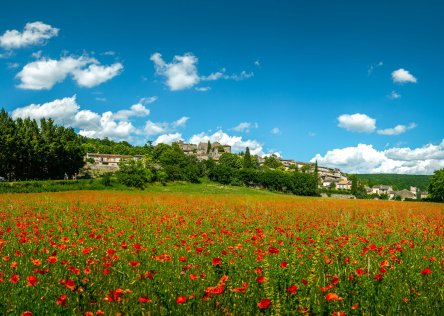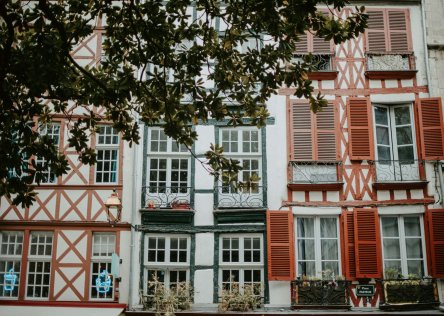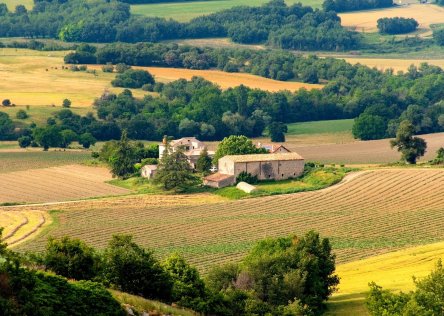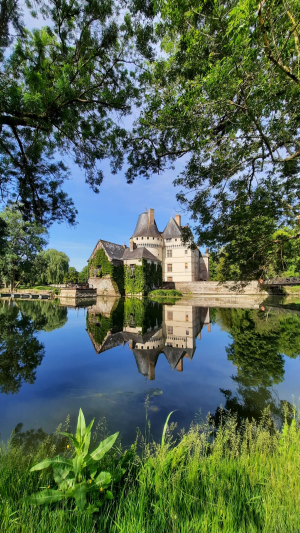
The Loire Valley is famous for its charming landscapes of peaceful rivers (the Loire, Cher, Indre and Vienne), rolling vineyards, and an extraordinary concentration of Renaissance and medieval castles.
At France Just For You, we love showing travelers how to see these spectacular châteaux beyond the typical tourist circuit. On our Loire Valley tours, we weave in local stories and share insider tips–included in our travelers’ France Just For You guidebook–to give you a deeper insight into French history and culture.
Below are some of our favorite Loire Valley châteaux — each with unique highlights, and all worth visiting on your tour of the Loire Valley.
Château de Chambord
Chambord castle is the largest of the Loire castles, and a majestic symbol of Renaissance innovation and royal grandeur.
- Architectural Marvel: Don’t miss the stunning double-helix staircase, attributed to Leonardo da Vinci.
- Royal Roots: Its construction was ordered by King Francis I, who wanted to show off his wealth. However, he only stayed at the castle for about 40 nights in total, due to the chilly interior and mosquito-filled marshes.
- Practical Tips: Arrive early or late in the day to avoid the busiest tourist crowds. The recently restored formal gardens are a must-see.
Château de Chenonceau
Chenonceau castle sits elegantly across the Cher River - just look below at the postcard-worthy reflections! It is often called the “Ladies’ Castle”, due to the remarkable women who shaped its history.
For example, Diane de Poitiers, longtime mistress of King Henri II, commissioned the construction of the famous arched bridge. Then, after taking back Chenonceau from Diane de Poitiers, Catherine de Medici, King Henri II’s wife, extended the bridge by building a two-story gallery on top of it. This became the setting for extravagant royal parties, dances, and political gatherings.
- Fairy-Tale Design: The château’s stone arches span the river Cher, making it one of the most recognizable and unique castles in the Loire Valley. The view is especially striking on a still day in the early morning or late afternoon, when the light reflects off the water.
- Fascinating History: Across the centuries, the castle has served as a medieval mill, a WWI hospital, and a passageway to Free France in WWII.
- Floral Splendor: A team of in-house florists keeps the château filled with fresh, seasonal arrangements throughout the year. Outside, the formal gardens and surrounding parkland offer plenty of space for a peaceful walk.
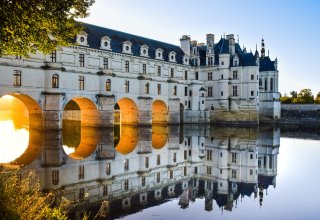
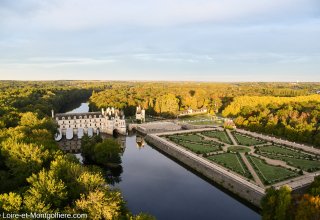
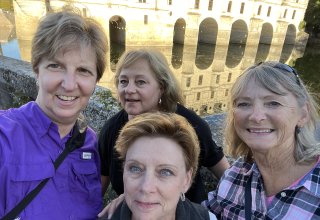
Château Royal d’Amboise
Overlooking the Loire river from its hilltop position, Amboise castle has both medieval towers and elegant Renaissance details. It was once a favorite residence of French kings and offers a great introduction to the region’s royal history.
- Leonardo’s Legacy: The Italian genius spent his final years in Amboise, and his resting place is inside the castle’s chapel.
- Panoramic Views: Enjoy sweeping views of the town and river from the castle’s terraces.
- In the Heart of Amboise: Just outside the château, you’ll find a mix of cafés, boutiques, and a weekly open-air market that takes place every Friday and Sunday morning in the town square. It’s a great spot to browse local cheeses, seasonal produce, and handmade goods. For a coffee or light lunch, try 'Bigot', a local favorite since 1913, known for its delicious pastries.
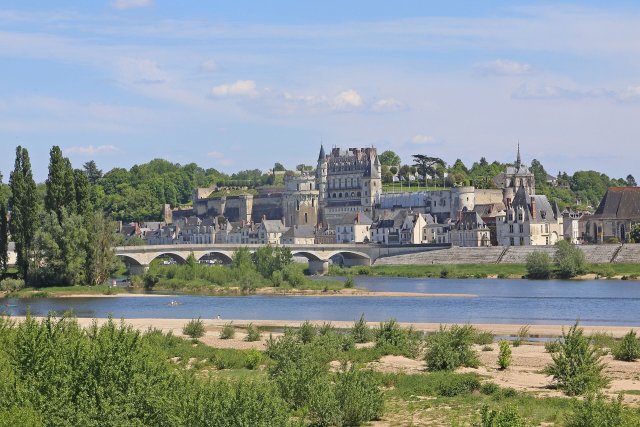
©
Château du Clos Lucé
A short stroll from Amboise castle, Clos Lucé is a must for anyone interested in art, science, and Leonardo da Vinci himself.
- Leonardo da Vinci’s Final Home: He lived and worked here for the last three years of his life.
- Hands-On Exhibits: Replica machines and models of da Vinci’s inventions bring his genius to life.
- Peaceful Gardens: Stroll through parkland dotted with interactive displays of Leonardo’s designs.

Château d’Azay-le-Rideau
This castle is a Renaissance gem built on an islet in the River Indre. It was commissioned in the early 16th century by a wealthy financier Gilles Berthelot under King François I. Later restored in the 19th century by the Marquis de Biencourt, he also developed the English-style gardens that surround the château today.
- Beautiful reflections: Azay-le-Rideau castle is partially surrounded by a man-made moat, creating calm, mirror-like waters that reflect its elegant stonework.
- Architectural Harmony: The château blends traditional French elements, like steep slate roofs and dormer windows, with Italian Renaissance features such as symmetry, classical columns, and decorative stonework. This mix reflects the tastes of the early 16th century, when King François I and his court were inspired by Italian art and architecture following military campaigns in Italy.
- Exploring the Interior: Inside, you’ll find carefully restored Renaissance rooms featuring original woodwork, coffered ceilings, and a grand staircase that was one of the first of its kind in France. It gives you a real sense of the refinement and ambition of early 16th-century design.
Château de l’Islette
Just down the road from Azay-le-Rideau, Château de l'Islette is a privately-owned castle with a warm, welcoming feel. Once the secret meeting place of sculptors Camille Claudel and Auguste Rodin, the château’s romantic history adds to its charm.
- Off the Beaten Path: It’s a more intimate, off-the-beaten-path experience with fewer crowds, which many of our travelers fall in love with.
- Idyllic Grounds: Perfect for a picnic by the water. On a still day there are gorgeous reflections on the lake, and you might spot the owner fishing in the lake.
- Family-Friendly: Younger kids love the chance to dress up in period costumes during a visit.
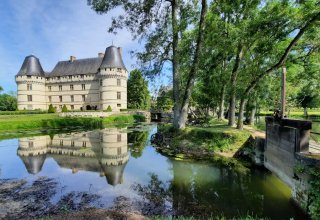

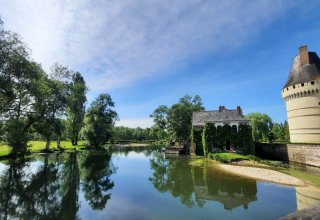
Château de Candé
Steeped in 1930s flair, Candé offers a different perspective on Loire Valley life in a more modern era.
-
Royal Romance: This castle is best known as the wedding venue of the abdicated King Edward VIII and Wallis Simpson in 1937. Château de Candé hosted the couple during the lead-up to their private ceremony. The interiors still reflect the style of the 1930s, with personal touches from their time there on display.
-
Art Deco Touches: Explore rooms filled with original 1930s décor and mementos of the former British king.
-
Serene Estate: Stroll the grounds for peaceful woodland walks away from typical tourist routes.
Château de Langeais
Dating back to the medieval period, Langeais castle is a fortress with a dramatic history. Langeais is also the home of France Just For You HQ - we have a view of the castle from our office!
- Medieval and Gothic Features: Château de Langeais is one of the best-preserved examples of late medieval Gothic architecture in the Loire Valley. Its sturdy keep, high defensive walls, and working drawbridge reflect its military purpose. The interior shows off more refined Gothic elements like detailed woodwork and richly decorated rooms furnished as they would have been in the 15th century.
- Royal Wedding Site: Château de Langeais hosted the marriage of King Charles VIII and Anne of Brittany in one of its halls at dawn on December 6, 1491. This union helped bring Brittany, an independent duchy under the French crown. Today, the wedding scene has been recreated in the same room using wax figures dressed in period costume, giving visitors a glimpse into this historic moment.
- Step Into Court Life: As well as the recreation of the royal wedding scene, you’ll see interactive displays that share the story of the wedding, as well as fully furnished rooms with tapestries and carved furniture.
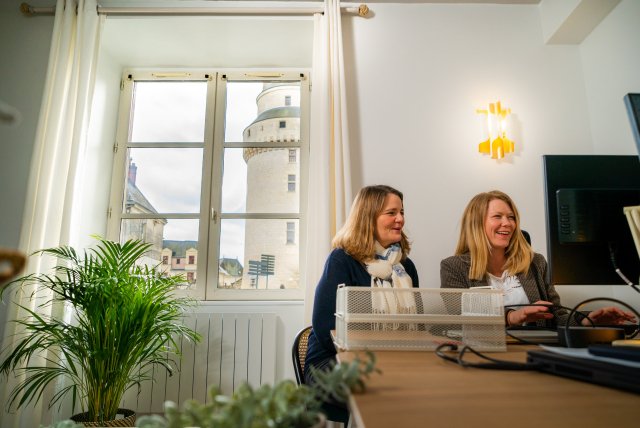
©
France Just For You
Château de Valmer
Known for its gorgeous terraced gardens, Valmer is a delight for horticulture lovers. The original château itself was destroyed by a fire in the 1940s, but the Renaissance-style gardens remain beautifully preserved, featuring medicinal plants, rare vegetables, and ornamental flowers.
- Renaissance Gardens: The gardens at Château de Valmer are an example of 17th-century Italian-style landscaping. They were originally designed in the early 15th century by Thomas Bonneau, a counselor to Louis XIII, and cover eight terraced levels. Stone staircases, elegant balustrades, classical statues, and ornamental fountains give the gardens a sense of harmony and grandeur.
- Vegetable Garden: At the heart of the estate there’s a one-hectare walled vegetable garden, home to more than 900 varieties of heritage fruits, vegetables, and edible flowers.
- Remarkable Garden: Recognized as a Jardin Remarquable by the French Ministry of Culture, the gardens at Valmer reflect centuries of care, craftsmanship, and a deep respect for biodiversity.
- A Unique Chapel: One especially unique feature of Valmer is the 16th-century troglodytic chapel carved into the rock.
- Scenic Vistas: The castle overlooks the Brenne Valley, offering lovely countryside panoramas.
- Wine-Tasting: The estate also produces AOC Vouvray wine and the ticket price includes a wine-tasting - so you can enjoy a garden stroll followed by a tasting with a view!

©
Daniel Jolivet, Flickr, CC BY 2.0
Forteresse Royale de Chinon
A medieval stronghold perched on a rocky outcrop above the Vienne River, Chinon fortress is a favorite for history buffs.
- Rich in History: This castle was linked to the Plantagenet kings and is famously where Joan of Arc met the future Charles VII. In 1429, during the Hundred Years’ War, Joan traveled to Chinon to convince Charles that she was sent by God to help him reclaim his throne. Their meeting marked a turning point in French history. Shortly after, Charles allowed Joan to lead troops into battle, leading to key victories that paved the way for his coronation.
- Three Castles in One: The Fortress of Chinon is made up of three distinct sections—Fort Saint-Georges, Château du Milieu, and Fort Coudray—each built in different periods and for different purposes. Together, they form a sprawling complex that reveals layers of Chinon’s military and royal history, from the early medieval counts of Anjou to the Plantagenet kings and the French monarchy. As you wander between the towers, ramparts, and royal lodgings, you’re walking through centuries of shifting power and architecture.
- Scenic Surroundings: The charming town of Chinon below is perfect for a lunch break or a leisurely stroll along the river.

©
W. Bulach, CC BY-SA 4.0
Château de Villandry
For us, exploring the castle itself isn’t a ‘must.’ It’s the gardens that truly impress and captivate visitors from around the world.
- Exquisite Gardens: Designed in the Renaissance style, the gardens of Villandry are a masterpiece of symmetry and precision, from ornamental flower beds to carefully arranged vegetable patches.
- Ever-Changing Beauty: The gardens are replanted throughout the year, so each season brings new colors and patterns to admire.
- A Historic Legacy: The last of the great Loire Valley châteaux, Villandry was completed in 1536. In 1906, Spanish doctor Joachim Carvallo and his wife, Ann Coleman, purchased the château and undertook an ambitious restoration of its gardens, returning them to their original Renaissance grandeur.
- The Maze: Take a few minutes to navigate the hedge maze for a fun break!
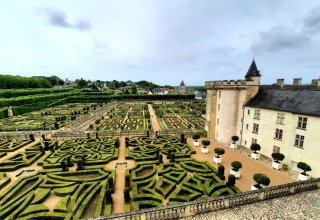
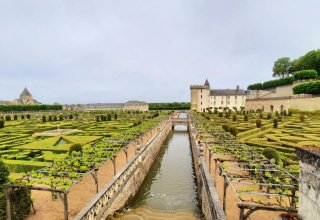
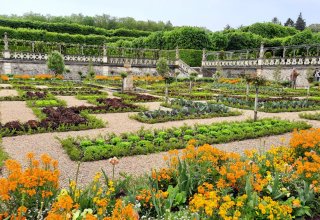
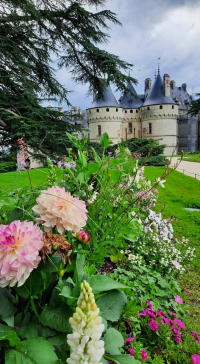
Château de Chaumont-sur-Loire
For art lovers, garden enthusiasts, or travelers seeking something unique, Chaumont-sur-Loire is a can’t-miss stop.
- Riverside Setting: Strategically built above the Loire, this château offers expansive views of the river and surrounding valley. It was once a prime location that provided both defense and a connection to important trade routes.
- International Garden Festival: From April to early November, Domaine de Chaumont-sur-Loire hosts its renowned International Garden Festival, where landscape designers from around the world create innovative, themed gardens. With around 30 experimental gardens blending art and horticulture, this ever-evolving festival is a must-visit for garden lovers.
Each year, the festival follows a new concept—recent themes have included “Resilient Garden” (2023) and “Garden: Source of Life” (2024).
In 2025, the theme “Once Upon a Time, in the Garden” will inspire whimsical, fairytale landscapes. - Historical Footnote: Chaumont-sur-Loire castle once belonged to Catherine de Medici, who exiled her late husband King Henri II’s former mistress Diane de Poitiers from Chenonceau castle to this château.
Ready to Plan Your Trip to the Loire Valley?
At France Just For You, we specialize in crafting self-drive tours that combine visits to these magnificent châteaux with opportunities to taste local wines, discover charming villages, and meet welcoming locals along the way.
If you’re ready to book a Loire Valley tour with us and explore the region at your own pace, we invite you to contact us. We’d be thrilled to design a Loire Valley road trip based on your preferences, that captures the true magic of France!
Send us your France trip-planning form
FAQs
When should I visit the Loire Valley?
- The best time to visit the Loire Valley is during the spring (April to June) or autumn (September to October):
Spring (April–June): Mild temperatures and blooming gardens. - Fall (September–October): Mild temperatures, colorful vineyards, and harvest season.
- Summer: Can be crowded, especially around popular châteaux.
- Winter: Castles remain impressive, and many are beautifully decorated with adornments and lights at Christmas. Keep in mind that some attractions will have shorter opening hours.
What's the best way to explore the Loire Valley?
Exploring the Loire Valley by car is a great way to discover some of its beautiful châteaux, peaceful riverside roads, and charming towns at your own pace.
See our suggested 5-day Loire Valley Road Trip itinerary for some inspiration!
What should I do while I'm in the Loire Valley?
Apart from exploring fairy-tale castles and beautiful formal gardens, there are many other options. From wine-tastings to peaceful boat trips along the river, just let us know your interests, and we'll craft the ideal Loire Valley itinerary - just for you!
See our post on the best things to do in the Loire Valley for more inspiration!





